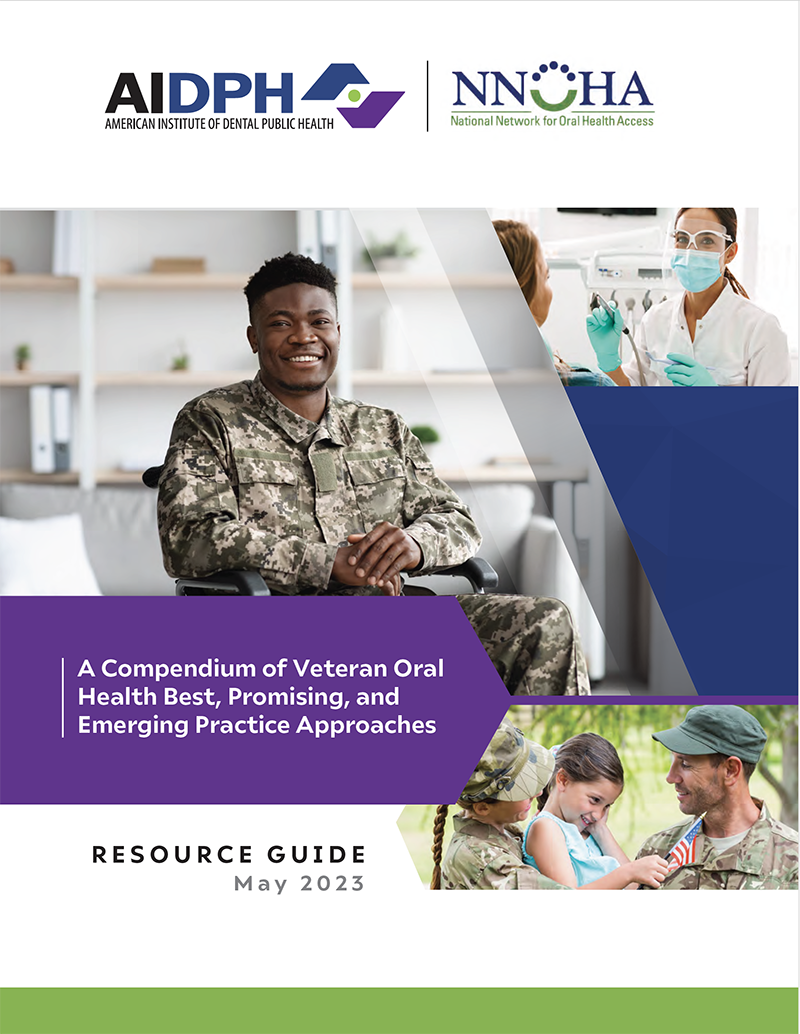PUBLICATION
A Compendium of Veteran Oral Health Best, Promising, and Emerging Practice Approaches
Veterans often struggle to access affordable, high-quality dental care. Only 15% of veterans are eligible for dental care through the Veterans Affairs health care system. With the 2018 MISSION Act, Veterans Affairs (VA) expanded access to care for veterans through the Community Care Network (CCN). The CCN comprises six regional networks that serve as the contract vehicle for the VA to finance care for veterans from community providers like federally qualified health centers (FQHCs). This compendium was developed by the American Institute of Dental Public Health (AIDPH) in collaboration with the National Network for Oral Health Access (NNOHA) to identify frameworks for emerging, promising, and best practices in veteran oral health by highlighting innovative care delivery programs across the U.S.
AIDPH and NNOHA solicited information from veteran-centric oral health programs that provided clinical dental care to veterans. An expert panel reviewed, scored, and categorized each program submission as an emerging, promising, or best practice model within three categories: patient recruitment, clinical care delivery, and community engagement. The final 14 submissions are included in this compendium to be reviewed, replicated, and implemented for veteran oral health care.
Key Takeaways:
Established funding underscored most best practice models, a challenge in many programs given the ineligibility of most veterans to receive care through the VA.
Sustainable funding was linked to strong community partnerships as was effective patient recruitment and outcomes. Programs with partnerships outside of oral health were able to draw in more diverse recruitment and funding pools.
Many programs were scored as having an emerging or promising practice, mostly due to limited resources and the inability to scale to more comprehensive care or integrated delivery settings.
Overall, most participating programs were not federal qualified health centers, but did have frameworks or approaches that could easily be adapted, scaled, or improved in a community care setting.



